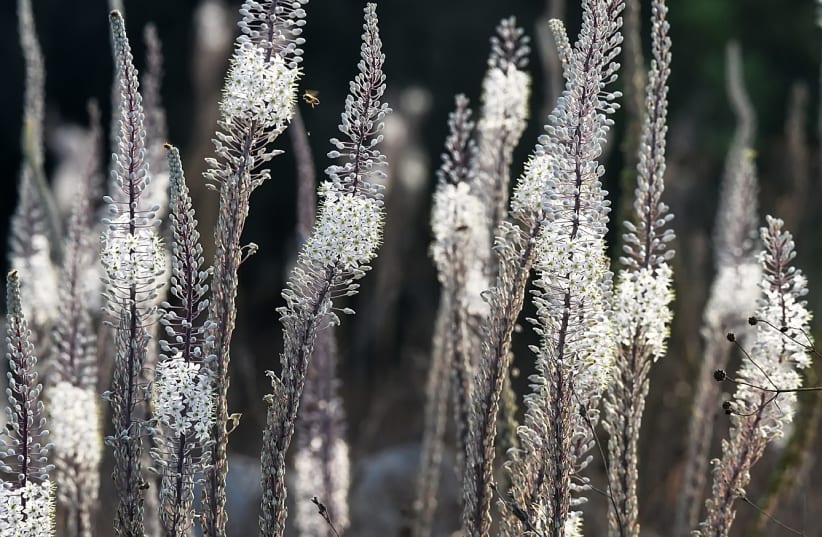After the extra hot weather throughout July and August, we are searching for a sign of relief from the heat. Even a few degrees less will tell us that the searing summer is close to its end. One of the signs we can use to spot the end of summer is the squill plant.
Squill is a lovely impressive plant that grows high and develops columns of white flowers. The plant is a geophyte, surviving underground as a circular bulb that can grow to 20 cm. in diameter and weigh up to a kg. This bulb stabilizes itself safely with strong and long roots that can dig 3 to 4 m. down deep.
With the shortening daylight, the bulb shoots out a long flowering stem that can easily reach 1.5 m. In September, dozens of small white flowers open first from the lower part of the stem upward. It happens daily and in sections. Every day a section of flowers bloom, survives one day and the next morning a higher segment blossoms.
The flowers produce nectar and attract many species of thirsty insects who drink from the sweet nectar in exchange for pollination. So you could say, first it’s a relief for the little insects that after a long dry summer, they finally have a supply of nutritious and needed food.
Among the insects that feed on the squill are bees, wasps, butterflies and beetles. Once you spot a squill or a patch of squills, make sure to get closer and enjoy the beautiful flowers and realize that temperatures will continue to cool.
